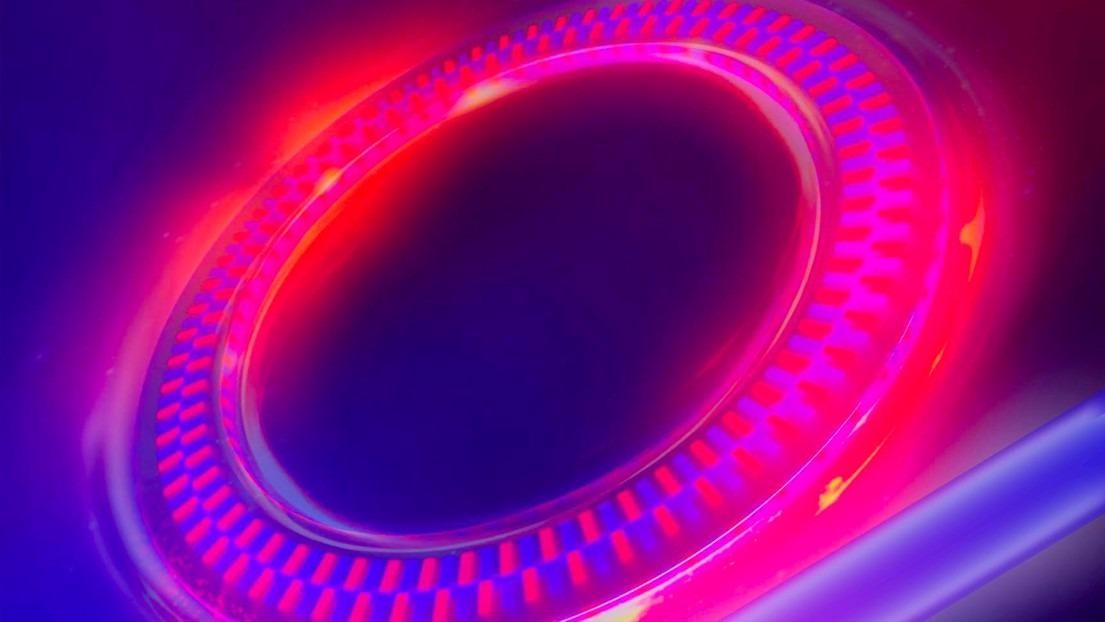Technology is progressively heading toward energy efficiency and miniaturization. This also relates to the field of electronic chips. Light, and optics more generally, are instrumental in helping create small and portable chips.

Image Credit: © 2022 EPFL.
Scientists from the Photonic Systems Laboratory, led by Professor Camille Brès, have fruitfully applied a unique principle for adding second-order optical nonlinearity into silicon nitride chips. Details have been published in the journal Nature Photonics.
Different Colors of Light
When using a green laser pointer, for example, the laser itself is not green because these are particularly difficult to manufacture. So we change the frequency of an existing laser. It emits at a frequency which is half that of green, then we double it by using nonlinearity in a crystal which gives us green.
Professor Camille Brès, Study Lead, Photonic Systems Laboratory, EPFL
“Our study consists of integrating this functionality but on chips that can be manufactured with standard techniques developed for electronics (CMOS). Thanks to this, we will be able to efficiently generate different colors of light on a chip,” Brès added.
The approach that was demonstrated had never before been executed. Existing photonic chips well-matched with CMOS processes use regular photonic materials, such as silicon, which do not have second-order nonlinearity and thus are not integrally capable of altering light in this way.
“This turns out to be a barrier to the advancement of technology,” adds the professor.
An Amplifier Ring
Researchers in the School of Engineering have formulated a method to trigger nonlinearity, which is used to transform light where it is not typically possible to do so. Furthermore, to make this transformation operative, they employed a resonator- a ring-shaped structure that amplifies the nonlinear processes endured by light.
Silicon nitride resonators, the technology of which was set up at EPFL and which is currently marketed by Ligentec SA, display very low losses so that light flows in resonators for an extended amount of time.
Non-linearity comes from the interaction between light and matter. This exchange must be long if the process is to be functional and efficient. However, the chip is a small object on which we do not benefit from long distances.
Edgars Nitiss, PhD and Study Co-First Author, Photonic Systems Laboratory, EPFL
The light added into the resonator is captured and travels the time required for the nonlinear interaction to be amplified.
Two Cars on the Highway
“Thanks to this technique, the efficiency of the chip is significantly improved. But a new constraint is imposed. When using a resonator, we are limited in terms of the colors available," states Camille Brès.
Indeed, the efficiency of a nonlinear effect also relies upon the phase agreement between the various interacting colors, whereas they unavoidably have diverse propagation speeds.
Just like two cars on the highway. We want the one in the fast lane to slow down while the other accelerates so that they can roll next to each other and thus interact.
Jianqi Hu, PhD and Study Co-First Author, Photonic Systems Laboratory, EPFL
This is only typically realized in very constrained cases in a resonator. The team discovered a solution to overcome this constraint and to offer access to a variety of several colors regardless of the use of the resonator. In the resonator, light waves spread, creating a coherent interaction that alters the material’s properties.
Self-organization of the structure is accomplished in a totally all-optical manner, which automatically makes up for the phase mismatch irrespective of the input color. As such critical limits of resonators are avoided while still making the most of their robust efficiency improvement, explains the scientist.
Journal Reference:
Nitiss, E., et al. (2022) Optically reconfigurable quasi-phase-matching in silicon nitride microresonators. Nature Photonics. doi.org/10.1038/s41566-021-00925-5.